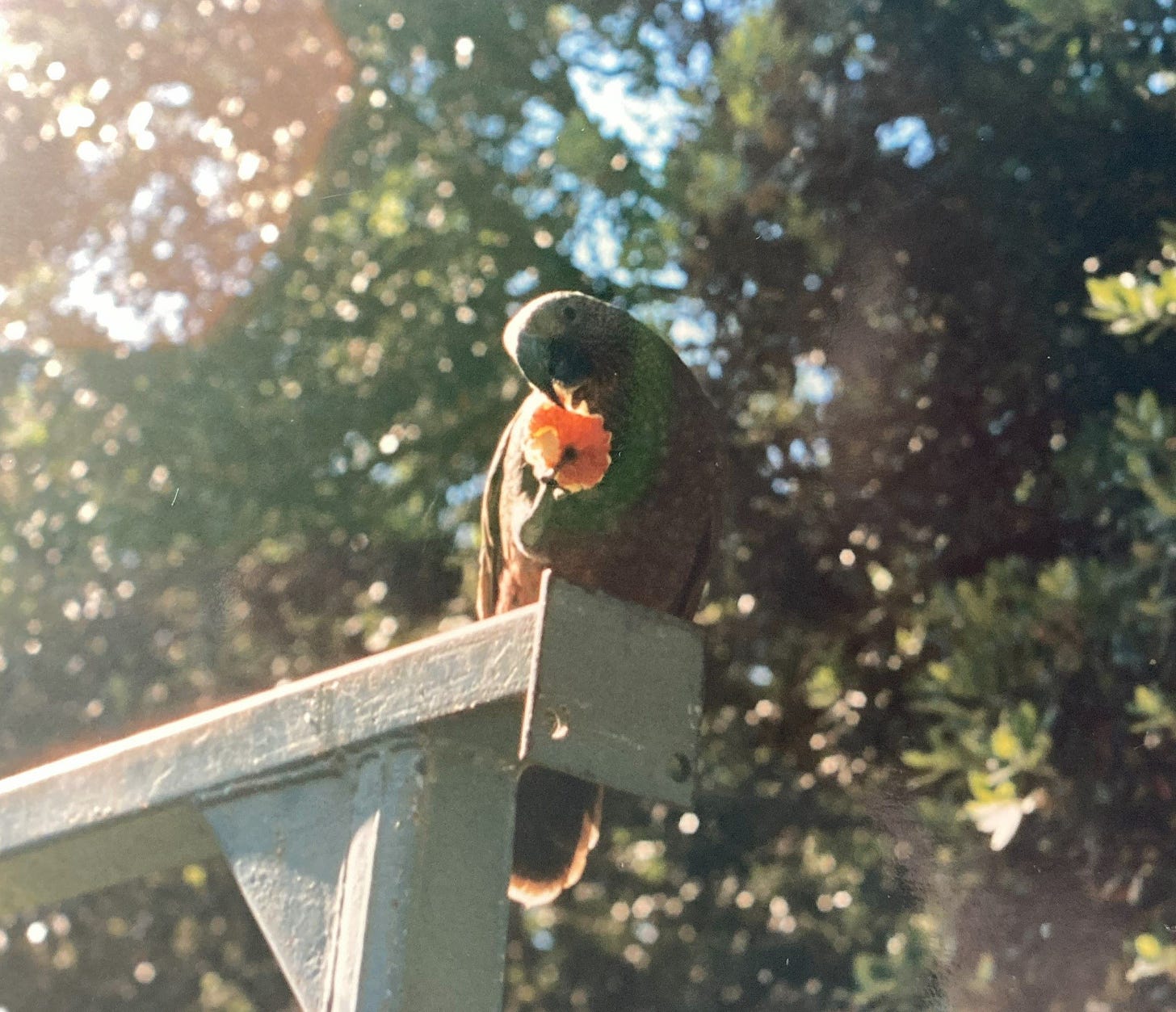Jewel in the crown
An apt description of an island, for many reasons (4 minute preview, 9 minute read)
When I was a child, my idea of Nirvana was a rugged, forest-clad island in the outer Hauraki Gulf. Often described as the jewel in the crown of conservation, Little Barrier Island is one of New Zealand’s oldest reserves. At around 3,000 hectares, it is one of the largest protected islands, and since it’s 18 kilometres from the nearest land, there’s little chance of rats or stoats invading. It did have some farm animals in the 1800s, but apart from those the only introduced mammals were feral cats, eradicated in 1980 and a type of rat, the kiore, eradicated in 2004.
As a result, the island has long been a refuge for species unable to survive on the mainland. By the 1970s, it held the only surviving individuals of the hihi (stitchbird) and the Little Barrier giant wētā. There were other species rare or absent from the mainland too. The island had numerous land and sea birds, native bats and rare reptiles such as the tuatara and Duvaucel’s gecko.
In the 1970s and 1980s, Little Barrier was a perfect microcosm of conservation in New Zealand. It was remote and inaccessible, and few people ever went there. Conservation was something done by bearded, white men, and the closest the public could expect to get to a rare species was watching a nature documentary.
But as a teenager, I had a remarkable opportunity. Some family friends were part of a group allowed to visit the island, and they took me with them on this trip. Technically, it isn’t an island that I’ve visited in the course of my work, but it is one of the special islands I have been lucky enough to visit.
I can still remember watching the island as we approached. It has a distinctive shape and I watched it grow larger and larger from the boat’s pitching deck. I had been on small yachts and ferries to islands such as Rangitoto, but I’d never taken a boat trip which was so long and so rough. I attempted to keep a smile on my face and pretended I was enjoying it. I wasn’t, but I wasn’t going to say so. When we finally arrived, I was desperate to have my feet on solid ground, but there was no jetty. We had to scramble onto a dinghy and then were rowed to a rocky beach.
The terrain of Little Barrier is forbidding. It’s an ancient volcano and the central peaks are more than 700 metres high. The land is heavily eroded and cut with deep ravines. The only flat land is a small triangle on the south-western side – it was there that we stayed at the bunkhouse and where I spent most of my time, since I didn’t have the fitness to be traversing the island.
My most vivid memory of the island is the bird life, in particular the kākā. I’d never seen one before – although they could be found on the mainland, in those days it was only in remote areas. On Little Barrier they were numerous and noisy. They were bold, too. They would snatch food from your hand, whether you offered it or not and were quite happy to use people as perches. It wasn’t uncommon to see 20 of them loitering around the bunkhouse in the hope of scavenging something tasty.
Although I’d seen numerous nature documentaries and knew that predators had a huge impact on New Zealand’s native species, it was on Little Barrier that I truly understood that impact. At home in Auckland, I would see one or two glossy black tūi in the garden whenever the kowhai and gum trees flowered. Occasionally there would be a few more, but I never saw a large group. On Little Barrier, they were almost like a different bird, flying in large flocks, their song filling the air. While other birds were less conspicuous, they still weren’t hard to see in the forest. I saw miromiro, not a rare species but new to me as someone whose experience of the forest was mostly in suburban Auckland. A couple of pāteke, an endangered native duck, wandered up to the bunkhouse one evening. I saw tīeke scrambling around in the undergrowth, and frequently heard their calls, which sounded to me like maniacal laughter. Today, if I want to see and hear them I can take a short trip to Zealandia, but in those days they were still confined to a few remote islands.
A few years ago, I helped my mother move to a smaller house and found that I’d left a large box of photos in the wardrobe of my childhood bedroom. I went through them and found a couple of packets from my visit to Little Barrier. I still remember my basic Pentax camera with a 50 millimetre lens, and the way I chose the exposure, aperture and focus for every shot. They weren’t all good, but I didn’t take a dozen shots of the same thing and hope one or two of them turned out alright. It’s hard to imagine now, but it seems that I took only two rolls of film. Every image was considered with care.






